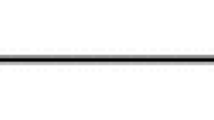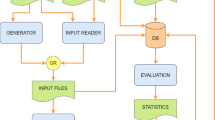Abstract
A kidney exchange program, also called a kidney paired donation program, can be viewed as a repeated, dynamic trading and allocation mechanism. This suggests that a dynamic algorithm for transplant exchange selection may have superior performance in comparison to the repeated use of a static algorithm. We confirm this hypothesis using a full scale simulation of the Canadian Kidney Paired Donation Program: learning algorithms, that attempt to learn optimal patient-donor weights in advance via dynamic simulations, do lead to improved outcomes. Specifically, our learning algorithms, designed with the objective of fairness (that is, equity in terms of transplant accessibility across cPRA groups), also lead to an increased number of transplants and shorter average waiting times. Indeed, our highest performing learning algorithm improves egalitarian fairness by 10% whilst also increasing the number of transplants by 6% and decreasing waiting times by 24%. However, our main result is much more surprising. We find that the most critical factor in determining the performance of a kidney exchange program is not the judicious assignment of positive weights (rewards) to patient-donor pairs. Rather, the key factor in increasing the number of transplants, decreasing waiting times and improving group fairness is the judicious assignment of a negative weight (penalty) to the small number of non-directed donors in the kidney exchange program.
Access this chapter
Tax calculation will be finalised at checkout
Purchases are for personal use only
Similar content being viewed by others
Notes
- 1.
Patients with high calculated Panel Reactive Antibody (cPRA) rates.
- 2.
- 3.
We use the standard exclusion probability formula to map cPRA rate to compatibility. We remark, however, that cPRA is not the only factor determining compatibility and there is no perfect mapping formula; see Delorme et al. [16].
- 4.
As stated, practitioners may also add individual weight adjustments to patient-donor nodes but this is irrelevant to the conclusions of this work.
- 5.
Code, by James Trimble, for the position-index formulations is available at https://github.com/jamestrimble/kidney_solver.
- 6.
- 7.
The surplus donor at the end of a path may subsequently donate on the deceased donor program. Such matches are not counted in the total number of transplants.
References
Arrow, K., Chenery, H., Minhas, B., Solow, R.: Capital-labor substitution and economic efficiency. Rev. Econ. Stat. 43(3), 225–250 (1961)
Ashlagi, I., Gamarnik, D., Rees, M., Roth, A.: The need for (long) chains in kidney exchange. Technical report, National Bureau of Economic Research (2012)
Bertsimas, D., Farias, V., Trichakis, N.: The price of fairness. Oper. Res. 59(1), 17–31 (2011)
Biro, P., et al.: Building kidney exchange programmes in Europe: an overview of exchange practice and activities. Transplantation 103(7), 1514–1522 (2019)
Biro, P., et al.: Modelling and optimisation in European kidney exchange programmes. Eur. J. Oper. Res. 291(2), 447–456 (2021)
Canadian Blood Services. Donation and transplantation kidney paired donation program data report 2009–2013 (2014). https://professionaleducation.blood.ca/sites/msi/files/Canadian-Blood-Services-KPD-Program-Data-Report-2009-2013.pdf
Bullen, P.S.: Handbook of Means and Their Inequalities. Springer, Dordrecht (2003). https://doi.org/10.1007/978-94-017-0399-4
Canadian Blood Services. Interprovincial organ sharing national data report: Kidney paired donation program 2009–2018 (2018). https://professionaleducation.blood.ca/sites/default/files/kpd-eng_2018.pdf
Caragiannis, I., Kaklamanis, C., Kanellopoulos, P., Kyropoulou, M.: The efficiency of fair division. Theory Comput. Syst. 50, 589–610 (2012). https://doi.org/10.1007/s00224-011-9359-y
Caragiannis, I., Kurokawa, D., Moulin, H., Procaccia, A., Shah, N., Wang, J.: The unreasonable fairness of maximum Nash welfare. ACM Trans. Econ. Comput. 7(3), 1–32 (2019)
Carvalho, M., Caulfield, A., Lin, Y., Vetta, A.: Penalties and rewards for fair learning in paired kidney exchange programs (2023). arXiv:2309.13421
Carvalho, M., Lodi, A.: A theoretical and computational equilibria analysis of a multi-player kidney exchange program. Eur. J. Oper. Res. 305(1), 373–385 (2022)
Cho, I.-K., Meyn, S.: Efficiency and marginal cost pricing in dynamic competitive markets with friction. Theor. Econ. 5, 215–239 (2010)
Cole, E., et al.: The Canadian kidney paired donation program: a national program to increase living donor transplantation. Transplantation 99(5), 985–990 (2015)
Delorme, M., García, S., Gondzio, J., Kalcsics, J., Manlove, D., Pettersson, W.: New algorithms for hierarchical optimisation in kidney exchange programmes. Technical report ERGO 20-005, Edinburgh Research Group in Optimization (2020)
Delorme, M., et al.: Improved instance generation for kidney exchange programmes. Comput. Oper. Res. 141, 105707 (2022)
Dickerson, J., Manlove, D., Plaut, P., Sandholm, T., Trimble, J.: Position-indexed formulations for kidney exchange. In: Proceedings of the 17th ACM Conference on Economics and Computation (EC), pp. 25–42 (2016)
Dickerson, J., Procaccia, A., Sandholm, T.: Dynamic matching via weighted myopia with application to kidney exchange. In: Proceedings of the 26th Conference on Artificial Intelligence (AAAI), pp. 1340–1346 (2012)
Dickerson, J., Procaccia, A., Sandholm, T.: Optimizing kidney exchange with transplant chains: theory and reality. In: Proceedings of the 11th International Conference on Autonomous Agents and Multiagent Systems (AAMAS), pp. 711–718 (2012)
Dickerson, J., Procaccia, A., Sandholm, T.: Price of fairness in kidney exchange. In: Proceedings of the 13th International Conference on Autonomous Agents and Multiagent Systems (AAMAS), pp. 1013–1020 (2014)
Dickerson, J., Sandholm, T.: FutureMatch: Combining human value judgments and machine learning to match in dynamic environments. In: Proceedings of the 29th Conference on Artificial Intelligence (AAAI), pp. 622–628 (2016)
Ding, Y., Ge, D., He, S., Ryan, C.: A nonasymptotic approach to analyzing kidney exchange graphs. Oper. Res. 66(4), 918–935 (2018)
Dixit, A., Stiglitz, J.: Monopolistic competition and optimum product diversity. Am. Econ. Rev. 67(3), 297–308 (1977)
Farnadi, G., St-Arnaud, W., Babaki, B., Carvalho, M.: Individual fairness in kidney exchange programs. In: Proceedings of the 35th Conference on Artificial Intelligence (AAAI), pp. 11496–11505 (2021)
Freedman, R., Borg, J., Sinnott-Armstrong, W., Dickerson, J., Conitzer, V.: Adapting a kidney exchange algorithm to align with human values. Artif. Intell. 283, 103261 (2020)
Glorie, K., Van de Klundert, J., Wagelmans, A.: Kidney exchange with long chains: an efficient pricing algorithm for clearing barter exchanges with branch-and-price. Manuf. Serv. Oper. Manag. 16(4), 498–512 (2014)
Huh, K., et al.: Exchange living-donor kidney transplantation: merits and limitations. Transpl. Proc. 86, 430–435 (2008)
Malik, S., Cole, E.: Foundations and principles of the Canadian living donor paired exchange program. Can. J. Kidney Health Dis. 1, 6 (2014)
Manlove, D., O’Malley, G.: Paired and altruistic kidney donation in the UK: algorithms and experimentation. ACM J. Exp. Algorithmics 19(2), 663–668 (2014). Article No. 2.6
Montgomery, R., et al.: Domino paired kidney donation: a strategy to make best use of live non-directed donation. The Lancet 368(9533), 419–421 (2006)
Park, K., Moon, J., Kim, S., Kim, Y.: Exchange-donor program in kidney transplantation. Transpl. Proc. 31(1–2), 356–357 (1999)
Patel, S., Chadha, P., Papalois, V.: Expanding the live kidney donor pool: ethical considerations regarding altruistic donors, paired and pooled programs. Exp. Clin. Transplant. 1, 181–186 (2011)
Rapaport, F.: The case for a living emotionally related international kidney donor exchange registry. Transpl. Proc. 18, 5–9 (1986)
Roth, A., Sönmez, T., Ünver, U.: Pairwise kidney exchange. Quart. J. Econ. 119(2), 457–488 (2004)
Roth, A., Sönmez, T., Ünver, U.: Efficient kidney exchange: coincidence of wants in markets with compatibility-based preferences. Am. Econ. Rev. 97(3), 828–851 (2007)
Roth, A., Sönmez, T., Ünver, U., Delmonico, F., Saidman, S.: Utilizing list exchange and nondirected donation through ‘chain’ paired kidney donations. Am. J. Transplant. 6, 2694–2705 (2006)
Sönmez, T., Ünver, U.: Market design for kidney exchange. In: Vulkan, N., Roth, A., Neeman, Z. (eds.) The Handbook of Market Design. Oxford University Press (2013). Chapter 4
Sönmez, T., Ünver, U., Yenmez, B.: Incentivized kidney exchange. Am. Econ. Rev. 110(7), 2198–2224 (2020)
Solow, R.: A contribution to the theory of economic growth. Q. J. Econ. 70(1), 65–94 (1956)
Woodle, E., et al.: Ethical considerations for participation of nondirected living donors in kidney exchange programs. Am. J. Transplant. 10, 1460–1467 (2010)
Acknowledgment
The authors thank William Klement and Mike Gillissie of Canadian Blood Services for numerous discussions and expert advice. We are also extremely grateful to David Manlove and John Dickerson and detailed comments and advice. This project was partially supported by the Natural Sciences and Engineering Research Council of Canada and the Institut de valorisation des données and Fonds de recherche du Québec via an FRQ-IVADO Research Chair.
Author information
Authors and Affiliations
Corresponding author
Editor information
Editors and Affiliations
Rights and permissions
Copyright information
© 2024 The Author(s), under exclusive license to Springer Nature Switzerland AG
About this paper
Cite this paper
Carvalho, M., Caulfield, A., Lin, Y., Vetta, A. (2024). Penalties and Rewards for Fair Learning in Paired Kidney Exchange Programs. In: Garg, J., Klimm, M., Kong, Y. (eds) Web and Internet Economics. WINE 2023. Lecture Notes in Computer Science, vol 14413. Springer, Cham. https://doi.org/10.1007/978-3-031-48974-7_8
Download citation
DOI: https://doi.org/10.1007/978-3-031-48974-7_8
Published:
Publisher Name: Springer, Cham
Print ISBN: 978-3-031-48973-0
Online ISBN: 978-3-031-48974-7
eBook Packages: Computer ScienceComputer Science (R0)




